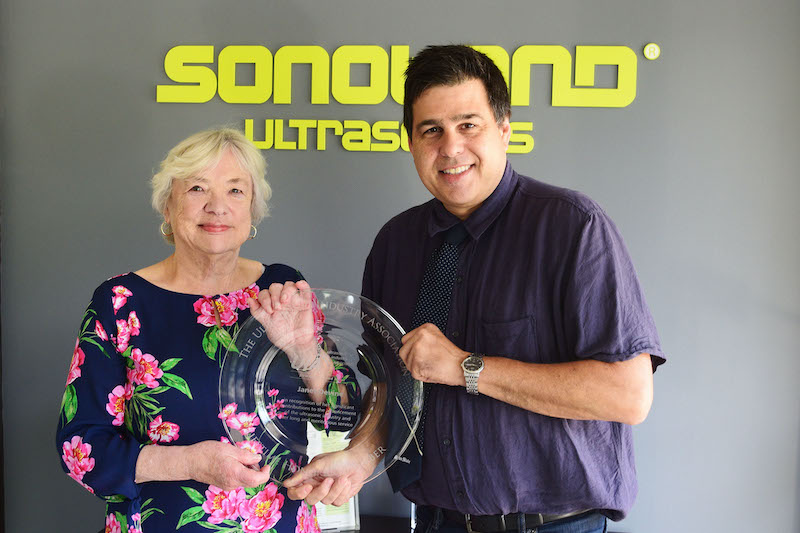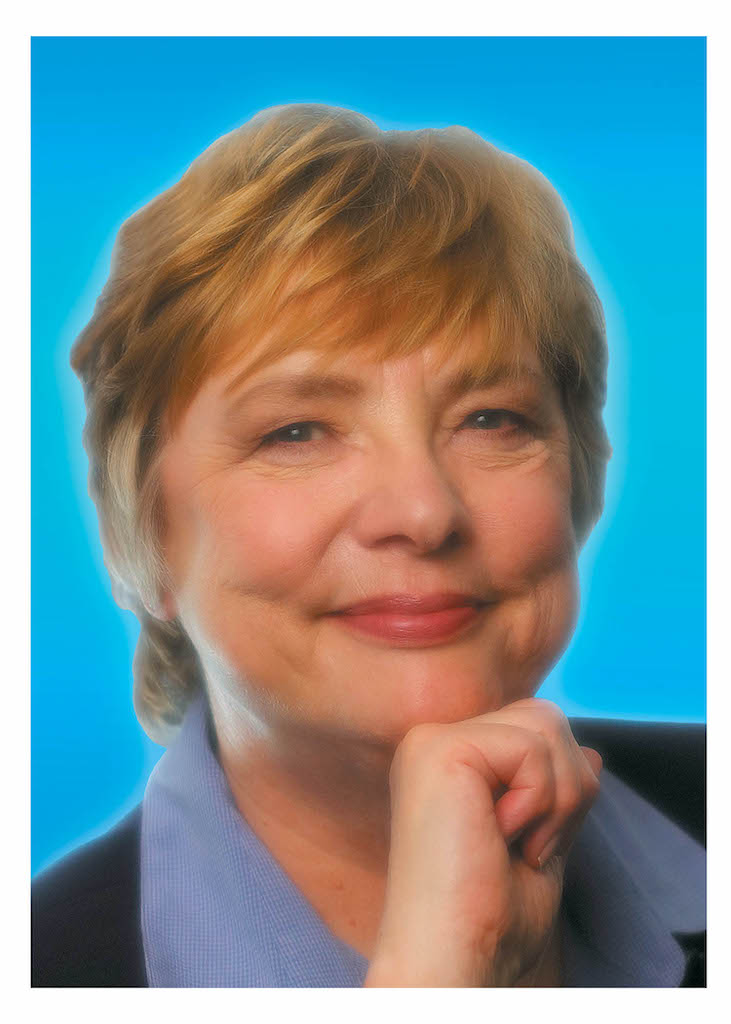By Melissa Femia –
This edition of The Power Women series features Janet Devine, current President of Sonobond Ultrasonics in West Chester, PA. Sonobond is a manufacturer of sonic welding equipment used to essentially splice together wires using vibration technology. Janet shared her story from her original roots in England to becoming one of the few female leaders of a business in the wire harness industry several decades later.
Janet was born in Bristol, England and raised post WWII. She attended college during the 1950’s—when STEM was not an acronym for Science, Technology, Engineering, and Math and there were no high-profile programs geared toward attracting females into manufacturing and industry. At that time in primary school, students took a test, the “11-plus”, intended to help them identify their capabilities and interests. In terms of options, the students could select between grammar schools and public schools. This single test was monumental in defining a student’s destiny. The grammar schools selected the most academic students for their available scholarships. Only about 3-4% of students attended grammar schools. Based on her test results, Janet was fortunate to receive a scholarship to Colston’s Girls’ School in Bristol, the oldest girls’ school still in existence in the UK. At about 16 years of age, Janet graduated with “O” (ordinary) levels in math, physics, English language, English literature, Latin, and French. She also attained “A”(advanced) levels in Physics and Math two years later.
After graduating from Colston’s Girls’ School, Janet’s first job was as a technical assistant at Bristol Aero-Engines, later Rolls Royce. The company designed aircraft and aircraft engines. She was initially in R&D working with a team to design a wind tunnel; the team successfully met its objective by the target date. She was then moved onto the Ramjet Engine Development program. At that time, she was aware that her pay was 65% of the males hired as technical assistants. When she questioned the management team, she was advised that the boys have families to support. She then pointed out that the majority still lived at home and were single, but to no avail.
The company had a large apprentice program as well as educational programs for boys in which they could attain their shop apprentice certificates. Although the programs were intended for boys, Janet asked the head of the apprentice school for program entry but was denied and advised that the program was for boys and that she could pursue the typing and shorthand class for girls. She retorted that she had A levels in physics and math and wanted to be in the engineering class. However, she was told that she might distract the boys.
At some point later, she saw a flier for the Bristol College of Technology which was starting a program under the auspices of Imperial College, London. In this program, students could take classes at Bristol and test in London each term and subsequently finish the degree in London. She approached her boss with the idea of part-time employment so that she could attend the collegiate classes in Bristol. Since her boss was already upset that Janet was denied apprentice school entry, he visited the head of the apprentice school with Janet and told the leader that the school program should pay the fees for Janet to attend the program in addition to allotting her part-time employment. The apprentice-school leader surprisingly agreed. He then told her that if she passed, he would reconsider allowing females into the apprenticeship program. At 18 years of age, Jane experienced the worry of not only succeeding in the program for her own benefit, but also for that of potential future females in the apprenticeship program.
Of course, Janet succeeded and received her degree from Imperial College, London in the summer of 1959. She recalls approximately 25 graduates, of which only two were women.
At that time, England was still recovering from WWII as only fourteen years had passed since the war’s end. Jobs were scarce, let alone well-paying jobs. Housing and goods were at a premium. One day at a coffee shop while with a friend in Oxford, she met her future husband. He was a stationed there with the US Airforce. After graduation still in 1959, she married the American and departed in October for the USA.
She settled near Philadelphia and contacted an employment agency, which sent her to an interview at Aeroprojects, an R&D company in West Chester, PA. She remembers the engineer there telling her that the company was disappointed that she was female. Nonetheless, they hired Janet. Aeroprojects was working to determine whether high-frequency vibration of aluminum would remove the oxides enough to permit resistance welding. The task was to design a vibrating (ultrasonic) device that could disperse the oxide and then apply the electrical current to make a weld. Janet was a junior member of the assigned group. They discovered that the high frequency vibration surprisedly caused welding before the current was added. In 1960, the first patent was issued to Aeroprojects for the ultrasonic metal welding process.
The company later changed its name to Sonobond and started to manufacture ultrasonic welders for the then-growing solid-state electronics industry to join small wires to various devices. While the company was very innovative, profits and high salaries were not prominent. Janet left while she raised her young children. However, she was invited back to manage engineering after her previous boss left.
Shortly after re-joining Sonobond, the business was acquired by a venture capital company that was disappointed with the financials of the business and sold it to Inductotherm in 1998. Inductotherm was founded by the late Henry Rowan and had a core product of furnaces, though delved in other industries such as welding. Mr. Rowan suggested that Inductotherm select a product that they could produce and market rather than continuing to focus on R&D. The group selected ultrasonic metal welding, a core technology in the wire harness industry. When the company president resigned, Janet approached him to consider her for the position. She became the first female corporate president of the Inductotherm Group of companies. She has served in that capacity with Sonobond ever since.

From Janet’s early days as a technical assistant until now, she has seen more females in technology fields. Midway through her career, she remembers volunteering to talk with high school seniors about careers in science but was disappointed when more boys than girls seemed attracted to the field. Some years later, she attended a welding program with Ford’s Dearborn Scientific Research Group and was pleased to see nearly as many females in attendance as males. Around 20 years ago at a career day at a local high school, she was thrilled when she saw a group of girls in her last afternoon class. At the end of the session, she asked them why they had chosen her class and they replied that “cosmetology was full.” While she was disappointed by the reason for their attendance, she was happy for their presence and their gained exposure. She believes that men dominated the scientific industry long enough and would love to see more young women drawn to the scientific fields. The industry needs their insight and knowledge. She believes education systems and cultural influencers need to continue to foster young women to pursue challenging careers that have been male dominated. She also believes that companies are much more welcoming of females in technology than they were years ago.
Thank you, Janet, for sharing your most interesting story. You are a pioneer for females on the technology front.






























































